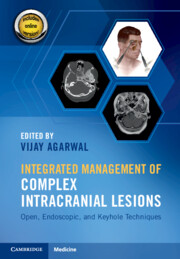Section II - Open Combined Approaches
Published online by Cambridge University Press: 05 October 2021
- Type
- Chapter
- Information
- Integrated Management of Complex Intracranial LesionsOpen, Endoscopic, and Keyhole Techniques, pp. 51 - 222Publisher: Cambridge University PressPrint publication year: 2021
References
References
References
References
References
References
References
References
Acknowledgments
The authors thank the staff of Neuroscience Publications at Barrow Neurological Institute for assistance with manuscript preparation.

